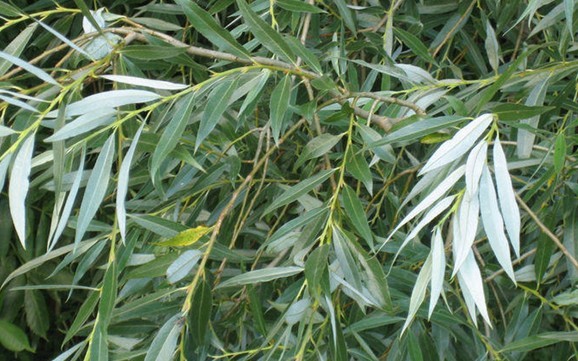Salix alba (White Willow) is a species of willow native to Europe and western and central Asia. The name derives from the white tone to the undersides of the leaves.
Medicinal uses: Hippocrates, Galen, Pliny the Elder and others knew that willow bark could ease aches and pains and reduce fevers. It has long been used in Europe and China for the treatment of these conditions. This remedy is also mentioned in texts from ancient Egypt, Sumer, and Assyria.[6] The Reverend Edmund Stone, a vicar from Chipping Norton in Oxfordshire, England, noted in 1763 that willow bark was effective in reducing a fever. The bark is often macerated in ethanol to produce a tincture. Uses: The wood is tough, strong, and light in weight, but has minimal resistance to decay. The stems (withies) from coppiced and pollarded plants are used for basket-making. Charcoal made from the wood was important for gunpowder manufacture. The bark was used in the past for tanning leather.
| Catalog | Product Name | CAS Number | Manual |
|---|---|---|---|
| CFN99541 | D-(-)-Salicin | 138-52-3 | |
| CFN98843 | Apigenin | 520-36-5 | |
| CFN99526 | Amentoflavone | 1617-53-4 |
A unique collection of 24 natural compounds from Angelica acutilobac (Sieb. et Zucc.) Kitag.
A unique collection of 23 natural compounds from Psoralea bituminosa L.
A unique collection of 31 natural compounds from Rauvolfia verticillata (Lour.) Baill.





